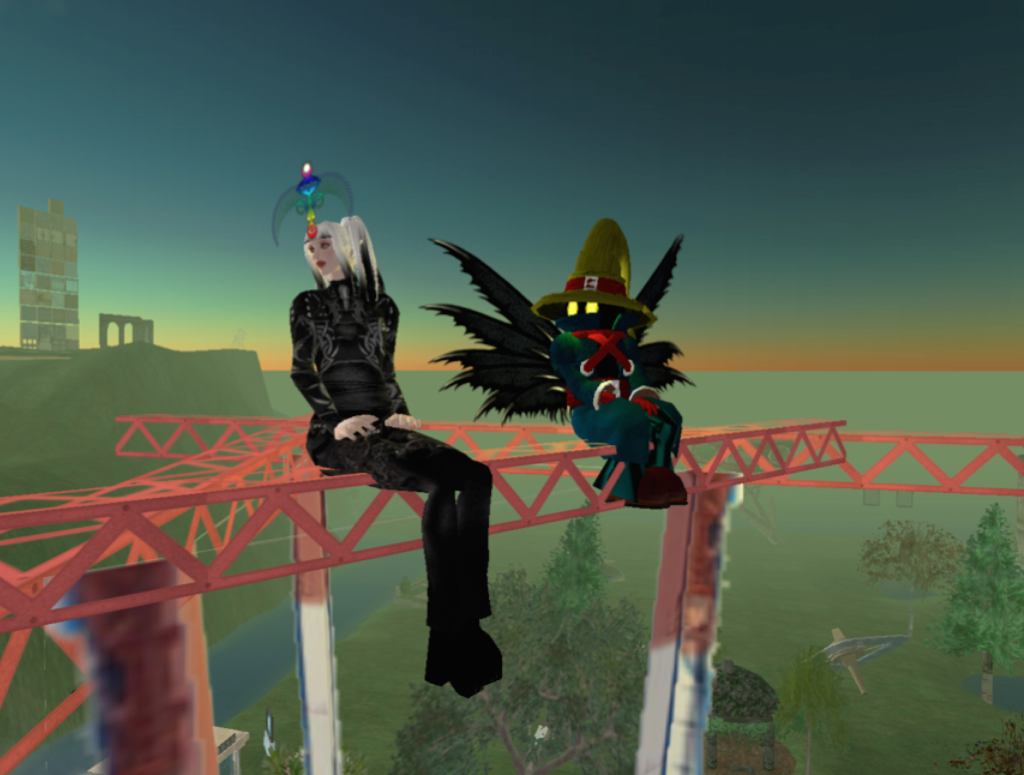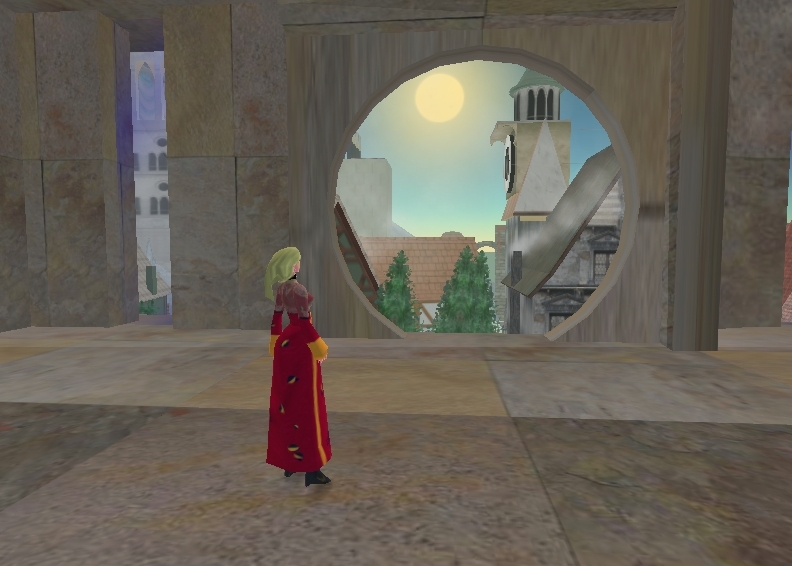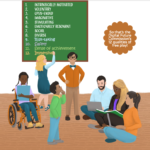
We’re all challenged today with constructing our digital identities. If you have a LinkedIn page, a Facebook account, or Twitter, or Instagram, or if you have a website or blog for your business or your family, you are constructing your digital identity. You’re constructing that identity with your choices of images, videos, retweets, hashtags, and words. And that digital identity is a work in progress.
Once upon a time (circa 2006 to 2010) I was a member of the Education team at Linden Lab, the makers of the 3D immersive user-created world, Second Life. I worked on a wide range of international education projects with teachers, professors, schools, school systems, universities, and Ministries of Education. This unique environment gave me the opportunity to play with digital identity construction. The photos here are a few of the many “self-portraits” I took inside the world. Pathfinder Linden is the avatar of a colleague on my Linden team. His Pathfinder character was one of my favorite digital identities. And the bottom photo is a #SelfieUnselfie of my avatar Cyberneticia in one of my favorite villages in Second Life.
Many of the educators in Second Life used the process of creating avatars as a way to make digital identity construction a conscious and reflective process for the young people in their projects. I learned a lot about constructing digital identity while I worked at Linden Lab. I had an extraordinary opportunity to experiment and play.
Dr. Mia Zamora and Hannah Kelly are exploring the process of digital identity construction today in The #SelfieUnselfie Project. In describing the project, they write:
Selfies have become the cultural artifacts of our time, a digital mosaic of the diversity of our online lives. And while some say selfies are a mark of a deeply narcissistic culture, others say selfies are a new version of the old idea of the self-portrait. Some understand the selfie as an important means of self-expression and an affirmation of self-love. Selfies have also become a key component of a person’s “personal brand”. Whatever your take on selfie-culture, there is no doubt that the selfie is an icon for our time.
The act of identity construction performed online is at once a private and individual performance. But it is also a communal and public activity. So what layers of our true selves can be shared in a selfie? And what does it even mean to be authentic in digital life today? What does “selfie culture” say about the world we’re living in now? How can thinking about self-representation in the digtial age help us make better decisions about sharing parts of ourselves, and even understand one another better?
How are you exploring digital identity construction in your family? It’s a basic skill required for critical digital literacy today. Consider using the questions that Mia Zamora and Hannah Kelly pose to help catalyze a family conversation about creating identity online. Here’s a suggestion…read through the #SelfieUnselfies shared here, and challenge each other to create your own using your phones and apps. Take turns sharing your #SelfieUnselfies and talk about why and where you would share them online, or why not.

What I am reading: Tap, Click, Read: Growing Readers in a World of Screens by Michael Levine and Lisa Guernsey. Michael H. Levine is Founding Executive Director of the Joan Ganz Cooney Center at Sesame Workshop. Lisa Guernsey is Director of the Early Education Initiative and the Learning Technologies Project in the Education Policy Program at New America.
Lisa Guernsey first described a framework of Three Cs: Content, Context, and Child, in her 2007 book Into the Minds of Babes: How Screen Time Affects Children from Birth to Age 5.
…one way to predict a “good reader” is to find the students who know a bit about everything. They have what experts call “background knowledge.” They’ll be the ones who know something about whatever comes up on a reading test. Building this background knowledge can happen through face-to-face experience as well as mediated experience: it can happen through field trips and dinnertime conversation as well as through books, educational videos, and Skyping with Grandma. What matters is the content, the context, and the child—the Three Cs—in which the content is vocabulary rich and designed to be understood by a young child of a certain age; the context enables back-and-forth conversation and opportunities for exploration; and the needs and interests of the individual child are considered.
Want the CliffsNotes version? Watch the webinar here (60 minutes) with Levine and Guernsey, presented by EdWeb and Common Sense Media Education.
Events: If you’re local to the San Francisco Bay Area, I’m co-hosting an interactive conversation for parents exploring how to live well with technology on October 6, 10 am –12:30 pm. My co-host is Susan Wansing, licensed clinical social worker in private practice working with adolescents and their families. She is also the mother of a teenage daughter. We’ll alternate sharing, myth busting, quiet reflection, and guided visualization. Participants will leave with new resources and strategies for making healthy choices around technology and helping our children and teenagers to do the same. To attend, please RSVP by replying to this email. I will send directions to our location in Berkeley. The event is free.
October 13, 9 am – 1 pm, I’ll be doing a workshop on Mindful Digital Life at the Julia Morgan School for Girls on the Mills College Campus as a part of Parenting U. Registration is open.


